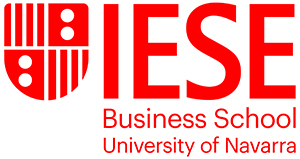Google Analytics 360 or IBM Digital Analytics? Magento or WebSphere Commerce? HubSpot or Bluecore? Adobe or SalesForce? What tools are indispensable in order to make the most of the full potential of digital marketing?
It will depend on the goals: wanting to reach new customers is not the same as selling more to existing customers or building customer loyalty. “First, you have to be clear about your business strategy and thereafter, choose the most appropriate tools,” explains Luis Ferrándiz, lecturer of Marketing at IESE Business School.
COVID-19 has made digital marketing indispensable. Customer relationships have moved online and there’s no turning back. Organizations have had to quickly adapt to efficiently manage this relationship in an increasingly digital environment. Understanding this new reality is essential for survival and, in this context, martech is the perfect ally.
Technology at the service of marketing
The term marketing technology or martech refers to the tools that enable organizations to get a 360-degree view of their customers and to create a data-driven personalized marketing strategy. By optimizing the planning, execution and measurement of marketing campaigns, customers can be more efficiently managed.
The rise of martech is due to a confluence of several factors:
- A change in consumer behavior in the new digital era. Millennials and Generation Z are hyper-connected consumers, with increasing purchasing power who shop on the go.
- The relevance of real time and mobile first in customer journeys. Thanks to the massive availability of data and innovation, new ways of creating experiences and new digital business models are emerging.
- Moreover, expectations for omnichannel customer journeys are growing. Consumers seek out integrated shopping experiences that blur the lines between the physical and digital world.
All this explosion of data and management complexity has meant that most marketing departments need new technologies in order to successfully compete.
COVID-19 has made digital marketing indispensable. Your customers have now gone digital.
Road map to implement martech
It’s not easy to choose the most appropriate tools among the more than 7,000 available in the marketing technology landscape alone. Moreover, software is useless when it is not linked to business goals. To build a martech project, it’s advisable to follow these phases:
1. Analysis of current technology
Evaluate the company’s operating model and analyze the current state of its marketing technology: what tools it has and what it uses them for.
2. Identification of use cases
What do you want to accomplish with martech from a business point of view? Decide whether to focus on digital assets, run external or internal campaigns, hone in on analytics and measurement, data warehousing or several areas at once.
3. Definition of martech architecture
Business goals and use cases will determine the tools you need. In this stage, you should check the use cases defined against the tools available in the company, to see what needs have to be met and to design the reference architecture. .
4. Selection of digital tools
When choosing the tools, you can go for vertical providers that cover practically all needs or niche providers, which specialize in specific functionalities. It’s common to start by buying integrated suites that come with several solutions and then progress towards niche operators, when the company has already mastered the martech universe.
5. Definition of roles and the marketing technology operating model
The team required to get the project underway will depend on the use cases identified and the size of the organization, but there are five roles that are indispensable: the martech leader, the data activation specialist, the owned media expert, the paid media expert and a specialist in another area of interest (automation, e-commerce, etc.). Moreover, at the operational level, it will be necessary to implement agile processes in the company to avoid interdepartmental silos and to make the martech project work.
As in the implementation of any strategic plan, it is vital to measure results. In addition, in the digital sphere, everything is measurable, so you can find out the impact you are having at all times and in real time.
Professor Luis Ferrándiz points out that in martech, “there is no magical or one-size-fits-all solution; instead, each company has to design its own strategy.” He adds that technology is just one of the components to bear in mind, and the operating model and capabilities are key to the successful implementation of marketing technology. “It is a very common mistake to have the tools but lack the internal capabilities to use them,” he explains.
“In martech, there is no magical or one-size-fits-all solution. Each company has to design its own strategy”.Luis Ferrándiz, IESE professor.
The six fundamental levers of digital marketing
The proliferation of new ways and means of communicating and the progressive relevance of images have changed the way marketing and its ecosystem are understood. We have moved from “conquest marketing” to “relationship marketing”. The goal of companies is no longer simply to prompt a repeat purchase, but to build a long-term relationship with the customer.
1. Improve the customer experience
Creating unique experiences is the clincher to gain a competitive advantage, a differential value. The strategy must be based on the so-called “customer experience”. Digitize all assets, create messages and content suitable for digital channels and design attractive offers to respond to customer needs.
2. Turn your users into real content creators
Producers and consumers at the same time: prosumers. They – better than anyone else – understand the products and services as they consume them on a daily basis and know – also better than anyone else – what changes could be made to improve the user experience. Integrate all this knowledge into your digital strategy.
3. Prioritize images
Customers are increasingly demanding more images and videos in their relationships with brands and these are a new source of driving traffic, a great opportunity for content strategies. And don’t forget about being mobile smart. For many, particularly young people, the cell phone is the gateway that brings them closer to the world. The future of digital marketing is to offer personalized content of value to each user.
4. Transform into a multichannel company
Although users have already gone multichannel, many companies still haven’t done the same. Design an omnichannel strategy to deliver segment information with a 360-degree view of each consumer.
5. Take care of your team
A revolution is carried out by people, not companies. Old hierarchical formulas are of no use in digital change processes. It is necessary to boost engagement with internal and external talent. Only organizations that are able to blend corporate culture, innovation, ingenuity and technology will achieve success.
6. Do not make beginner’s mistakes in your digital marketing strategy
Update your online content; align your business and marketing strategies; do not set too many goals; invest resources, because with meager budgets, it’s difficult to get anything remarkable done; engage with your customer community, and don’t forget, measure your online reputation.
If you want to find out more about how technology merges with marketing to manage the new customer journey and learn to define the best digital marketing strategy for your company, don’t miss the Digital marketing: strategy, processes and ROI program. This IESE focused program is available both in person and live online.

















